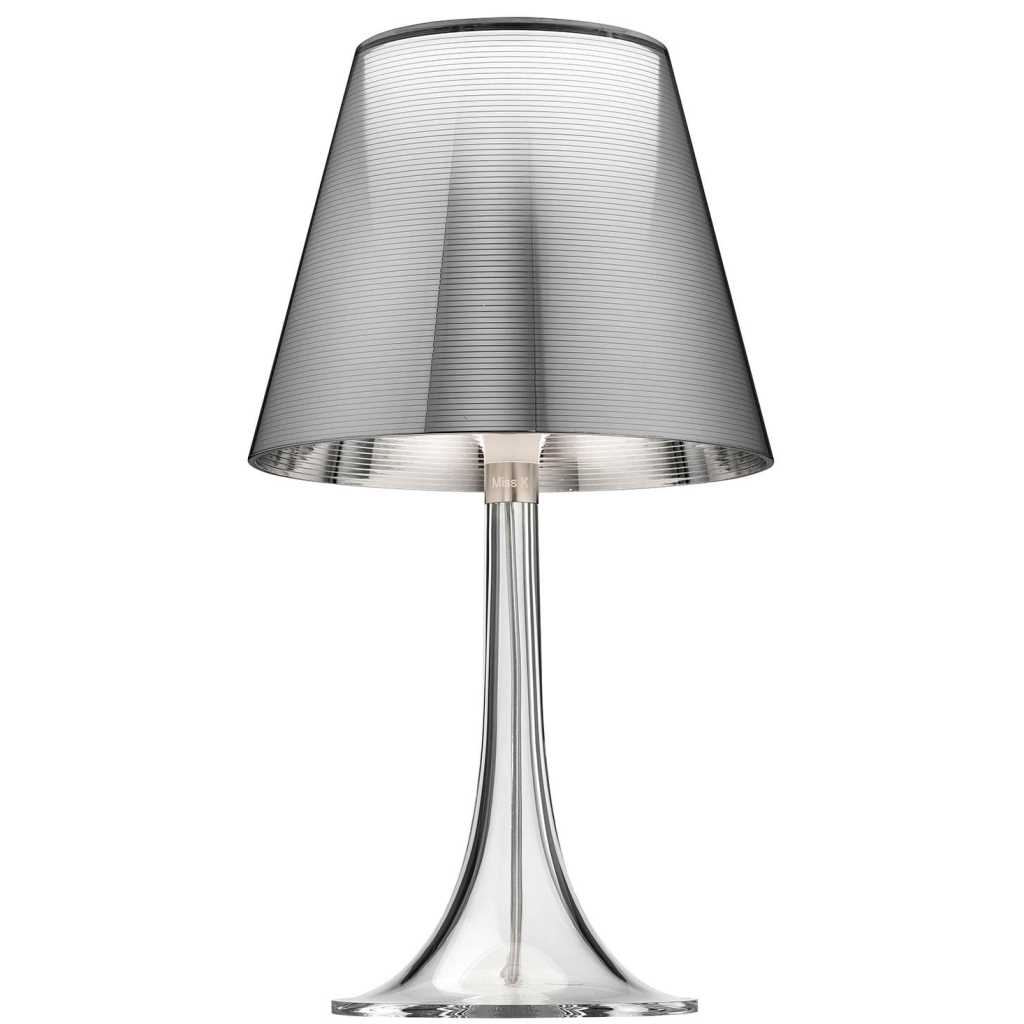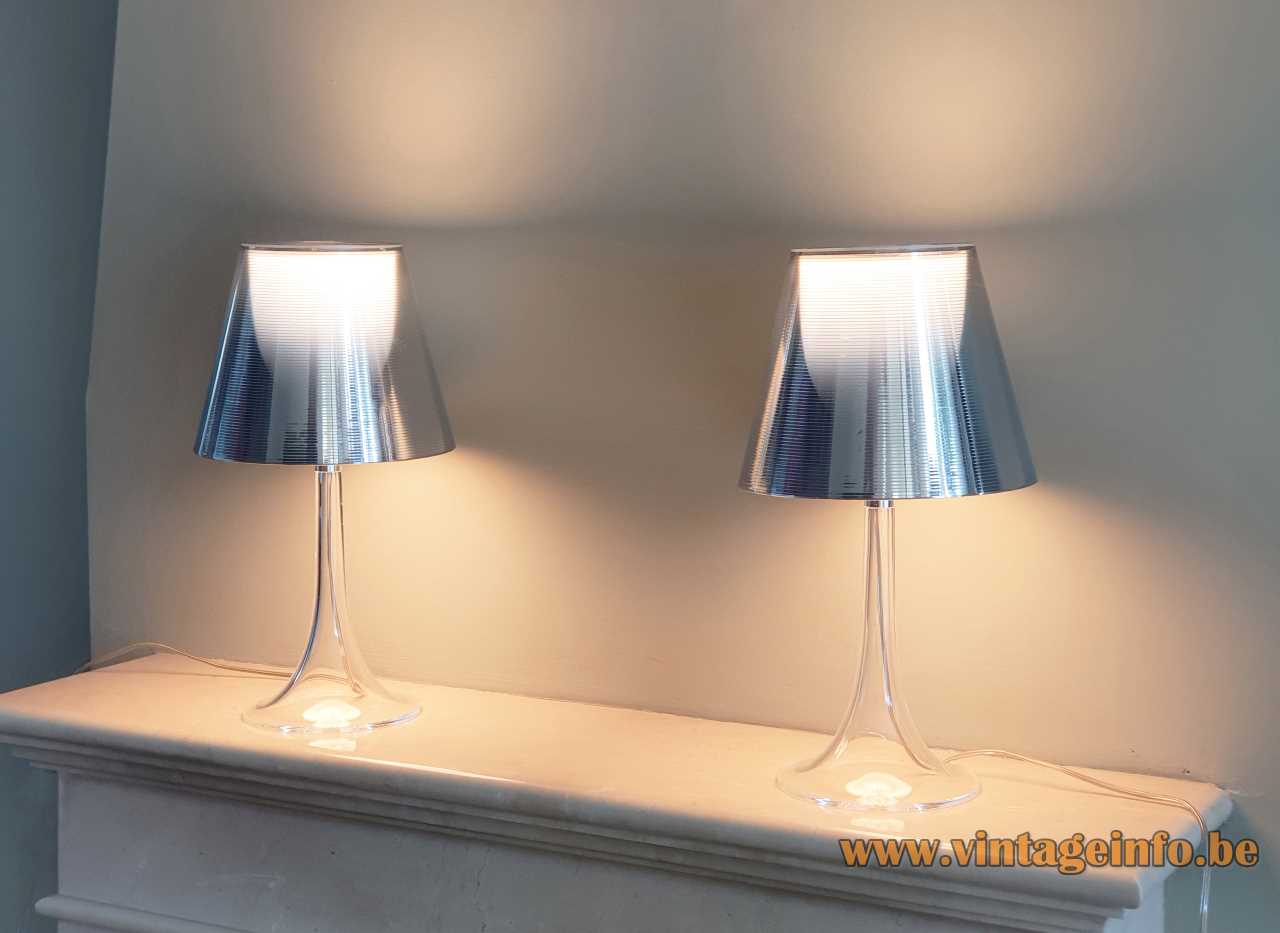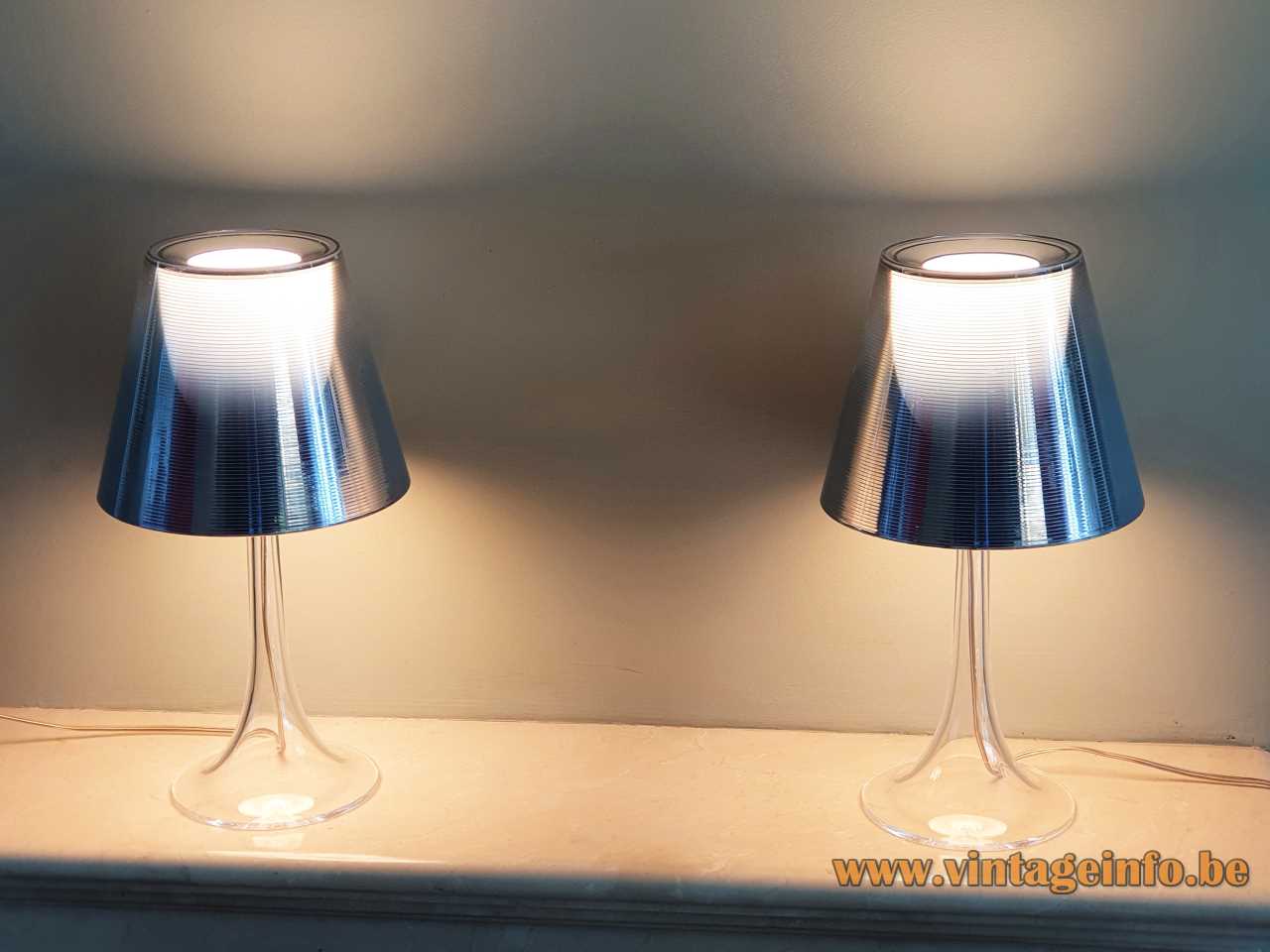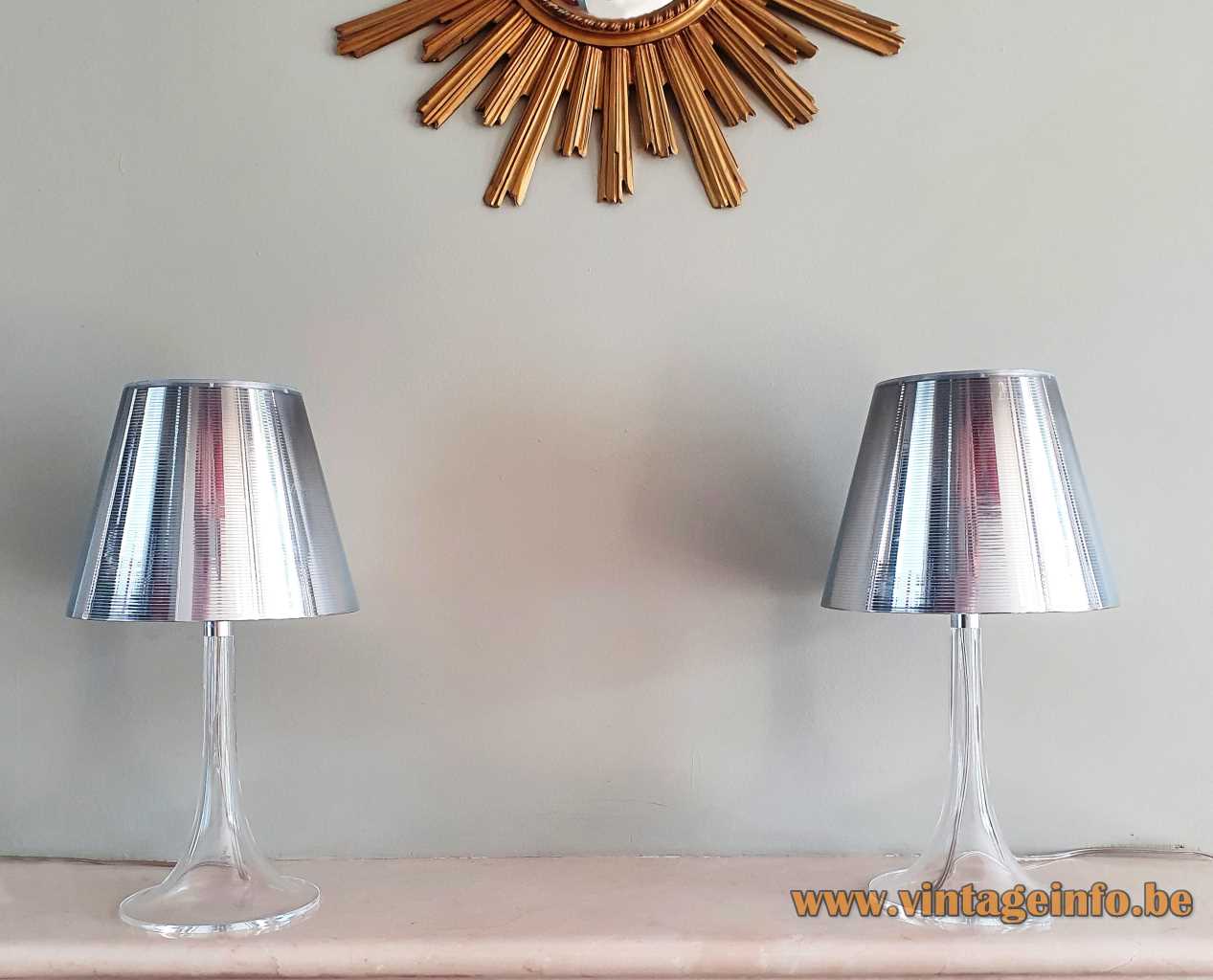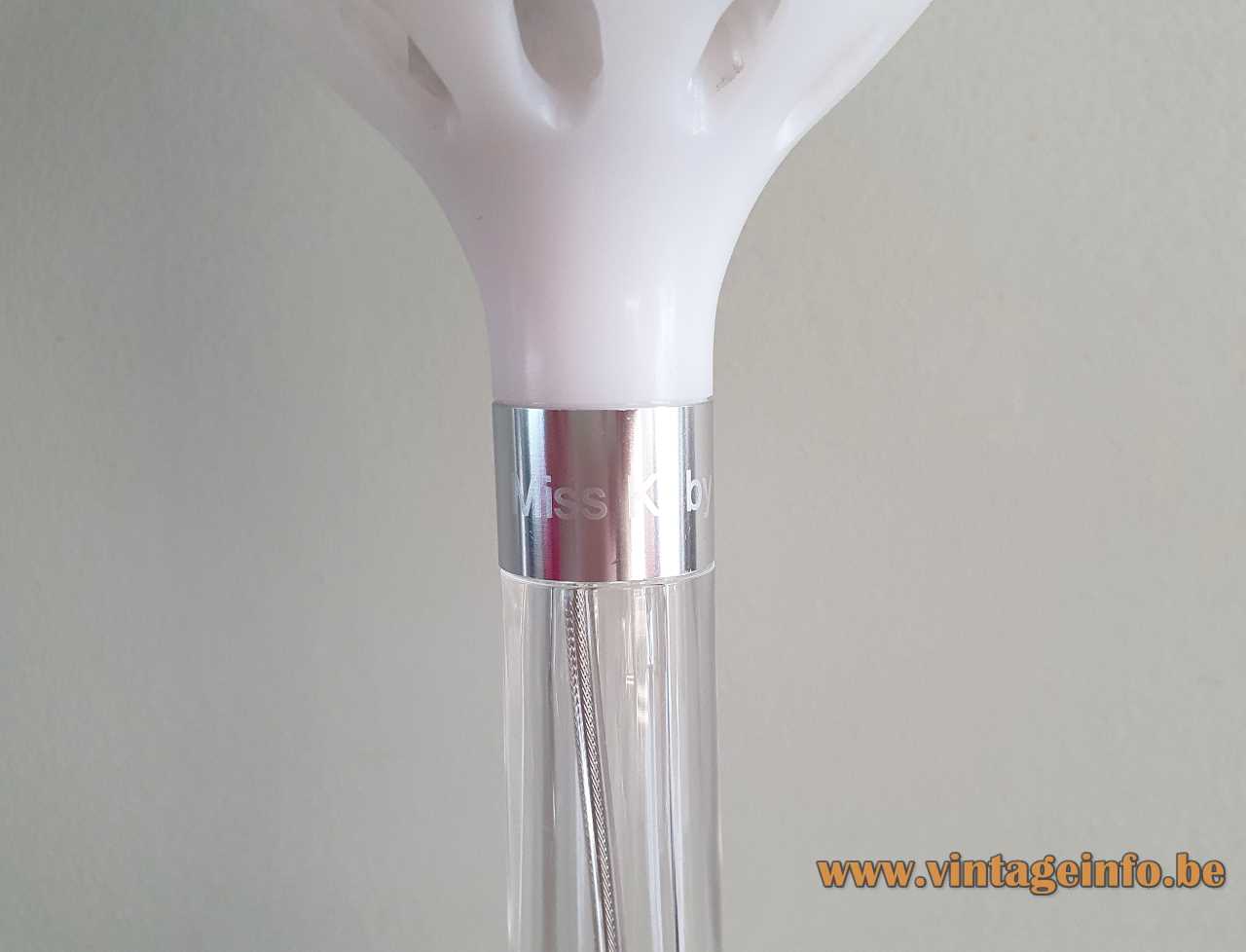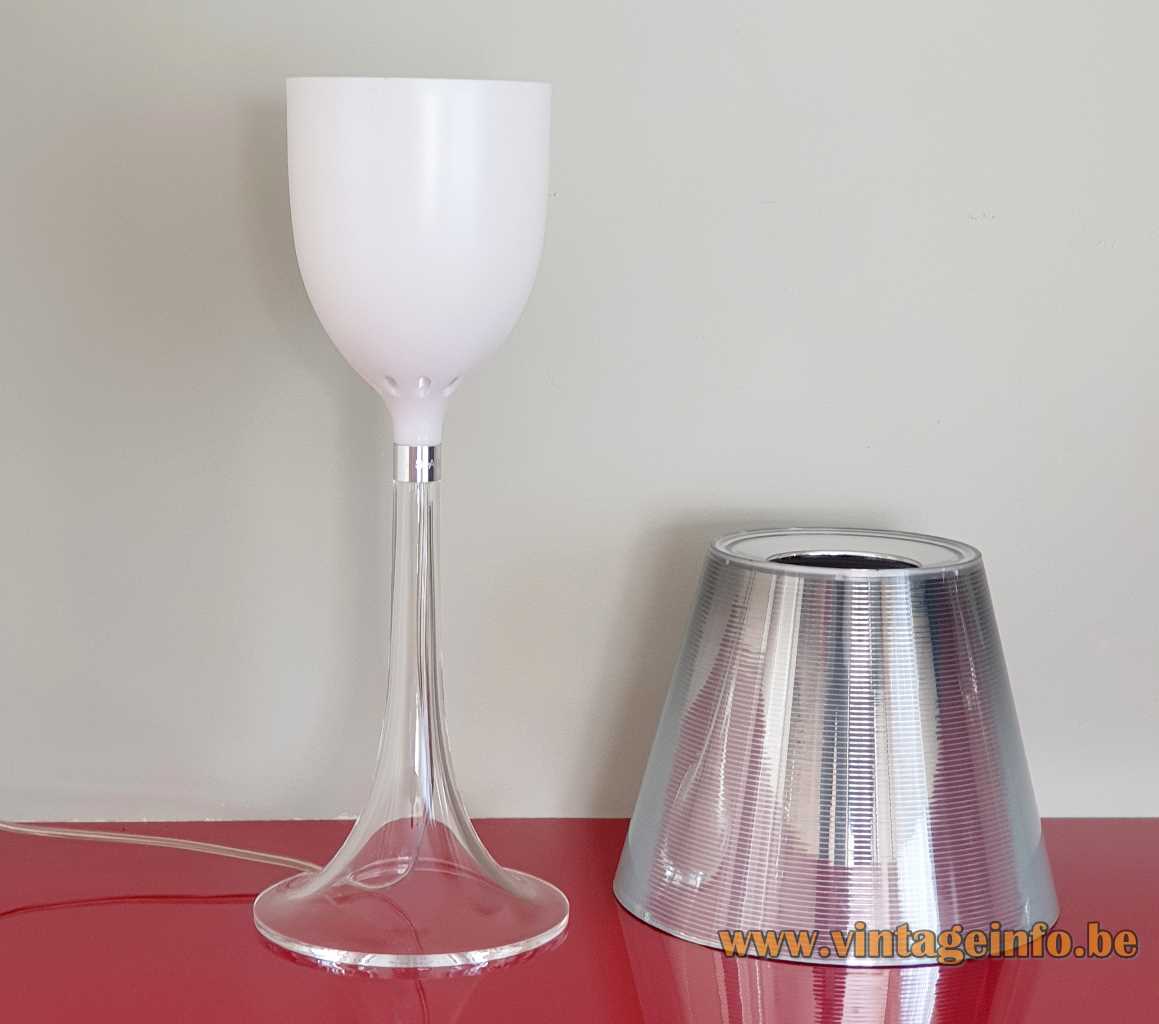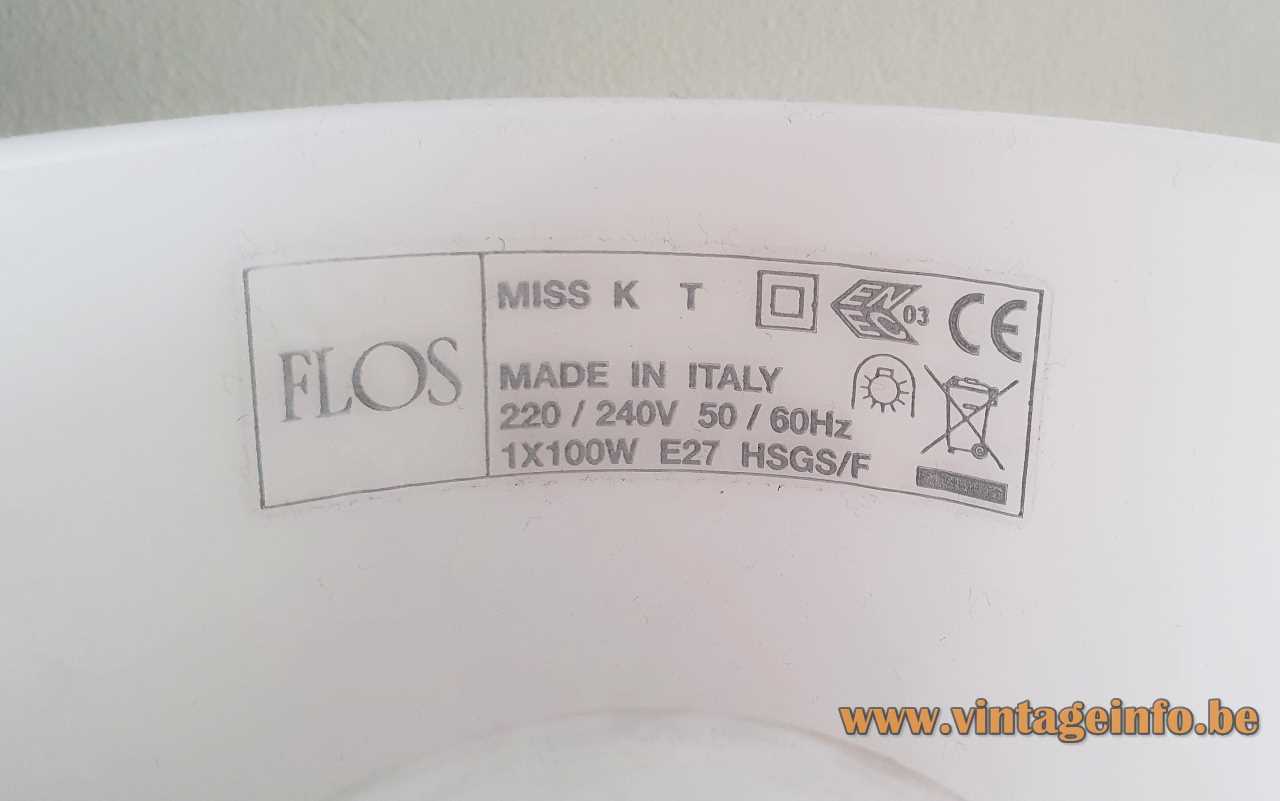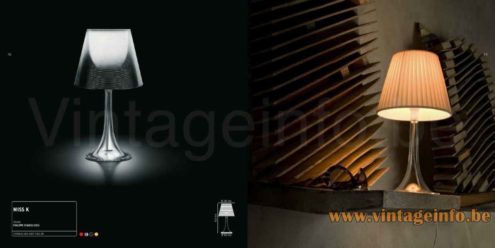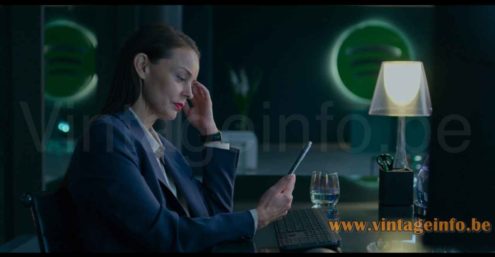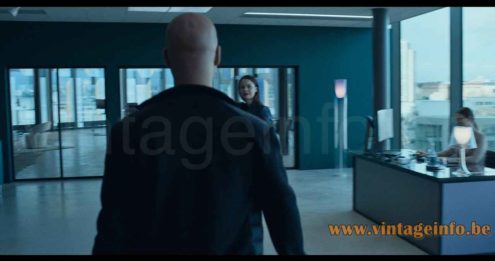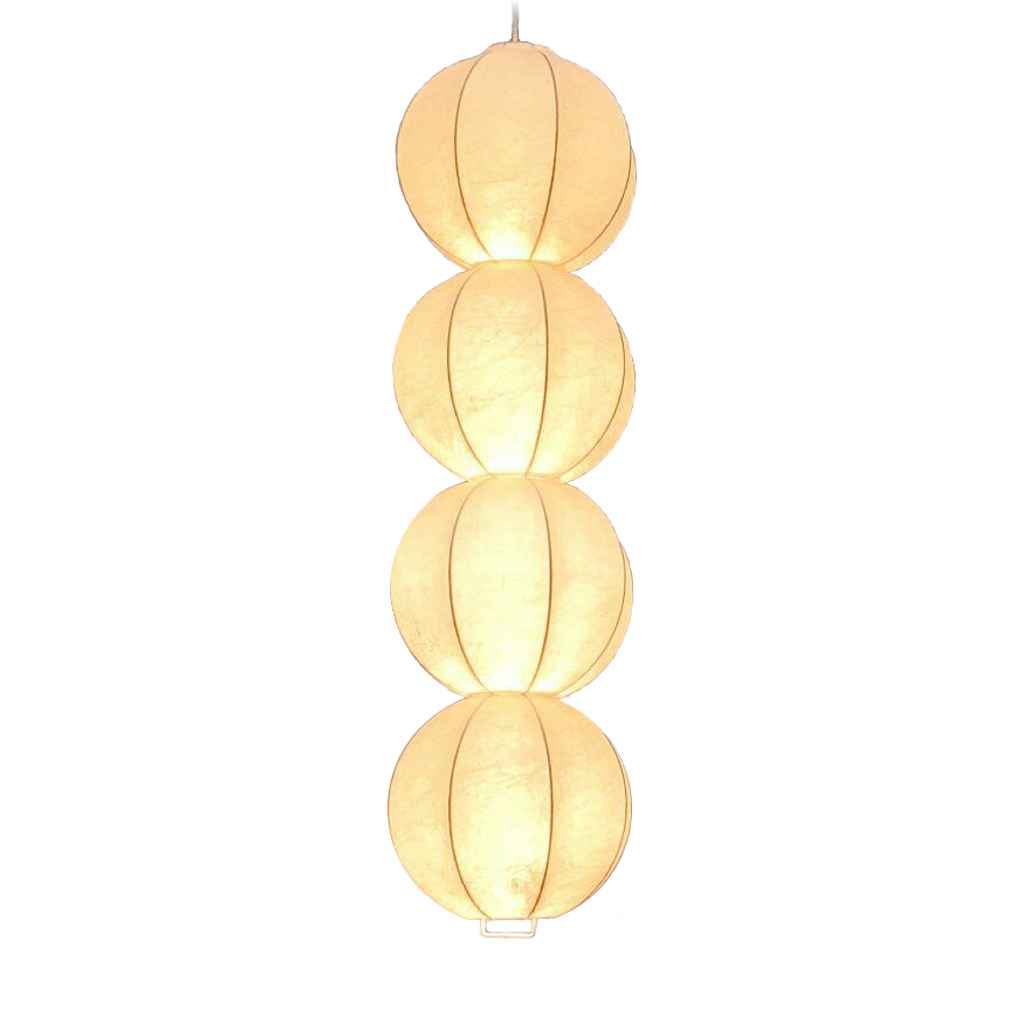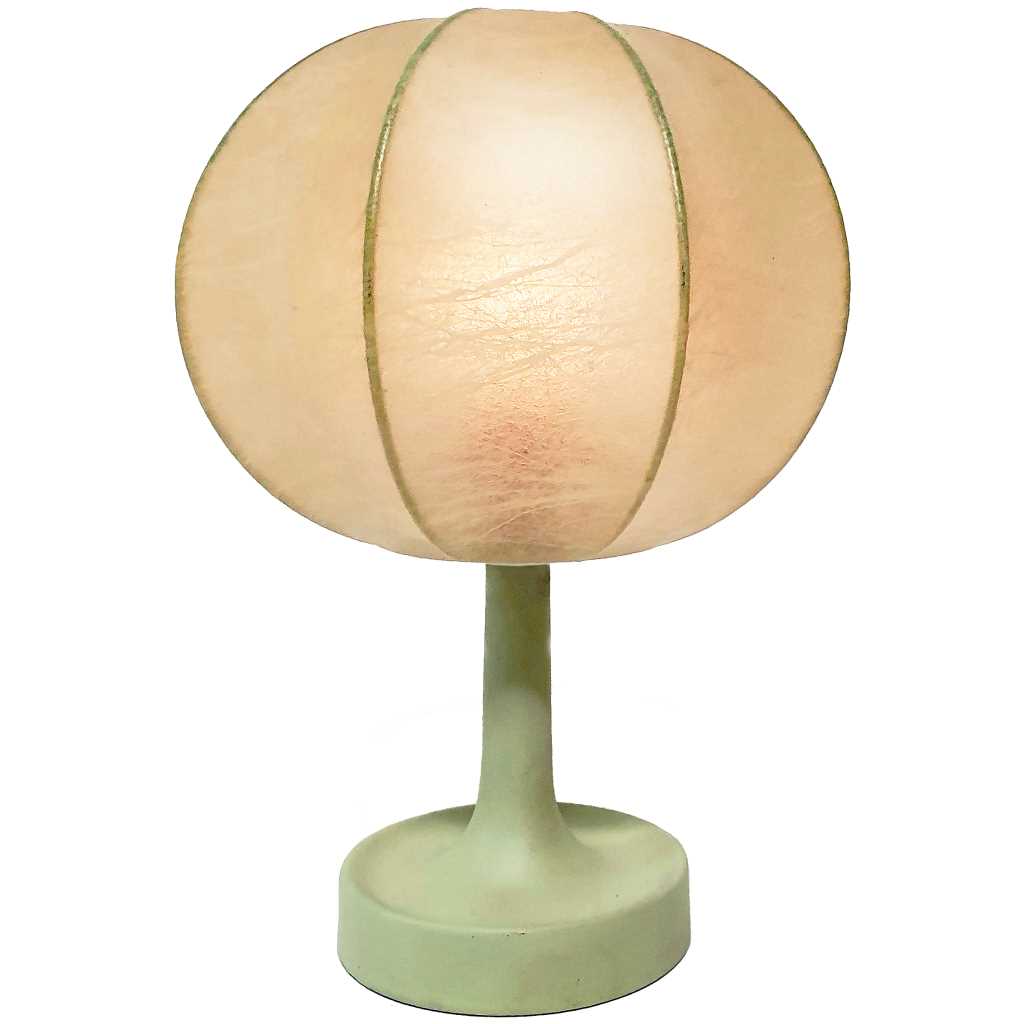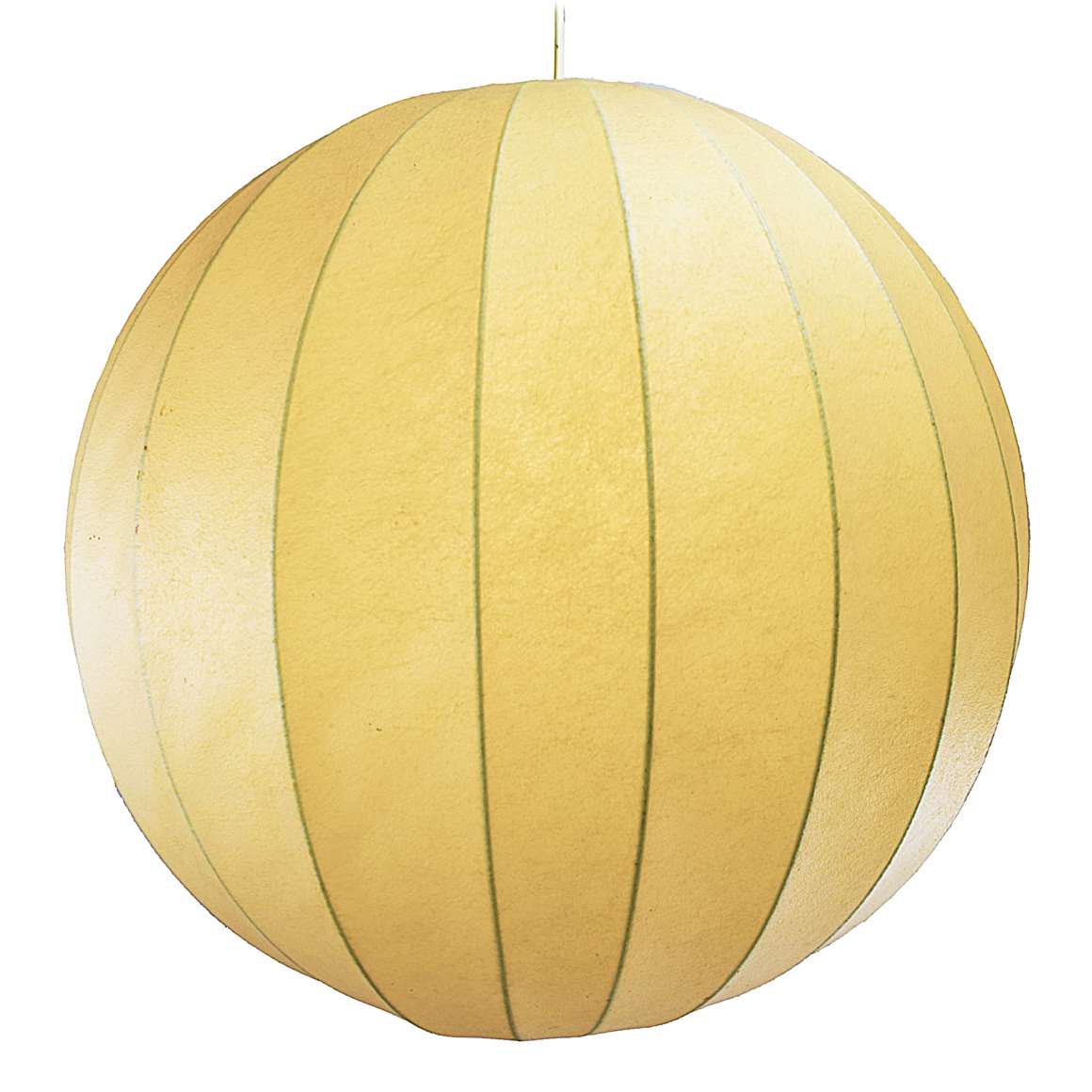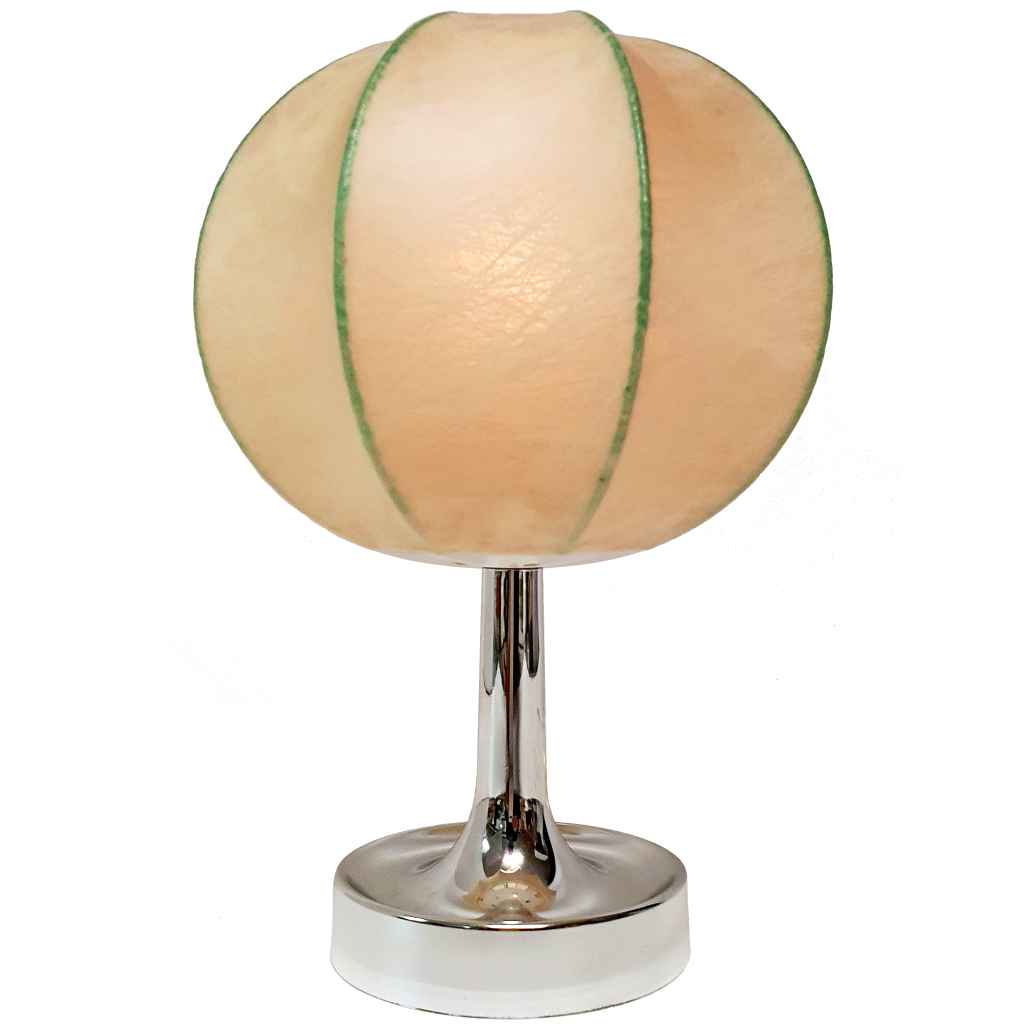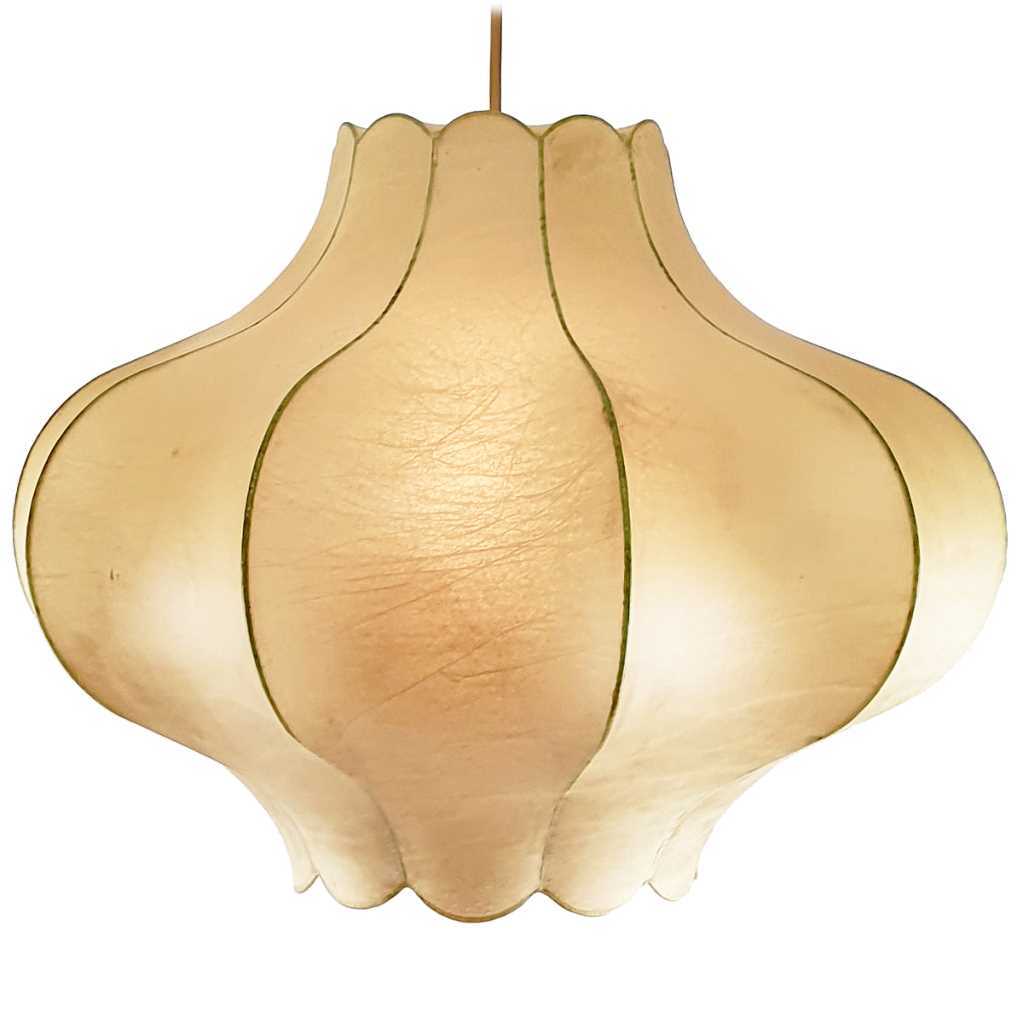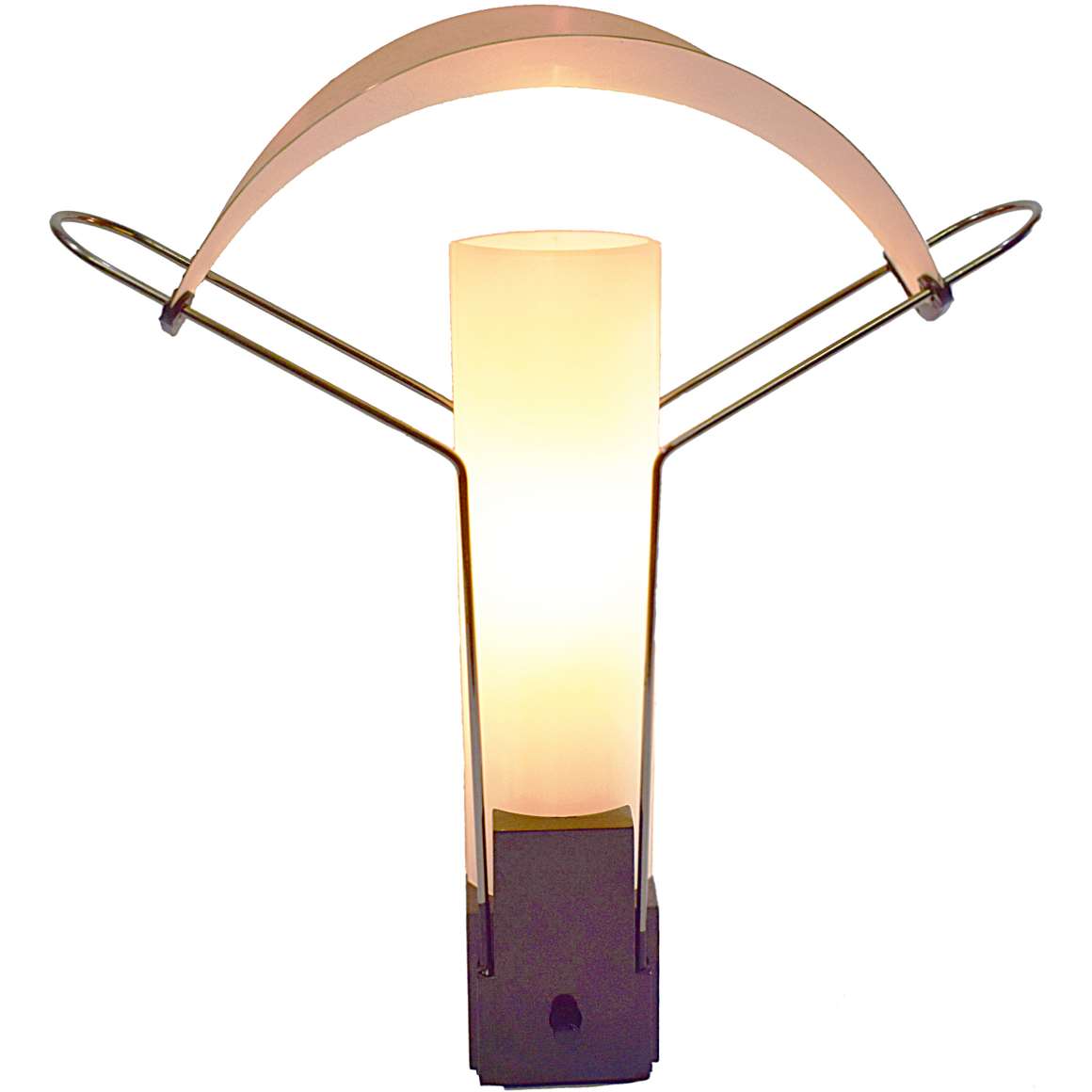FLOS Miss K Table Lamp – 2008 Catalogue Picture
FLOS Miss K Table Lamp
Text from the FLOS website:
Table lamp providing diffused light. Fully transparent, injection-molded PMMA polymethylmethacrylate frame; opaline, injection-molded polycarbonate internal diffuser and injection moulded transparent or coloured polycarbonate external diffuser completely finished with high-vacuum aluminisation process.
Lamps In The Movies
A FLOS Miss K table lamp was used twice as a prop in the 2022Swedish docu-drama miniseries The Playlist. Here in series 1, episode 6. Starring Edvin Endre, Ulf Stenberg and Gizem Erdogan.
The other time in this episode it appears with the Kartell Toobe floor lamp, a design by Ferruccio Laviani in 2007. A large amount of designer lighting can be seen in this TV series.
Links and sources (external links open in a new window)
FLOS Miss K table lamp – FLOS website
The FLOS website about Philippe Stark
FLOS philosophy/history – the Flos website
Emerging from a Cocoon: The Story Behind the Beginning of FLOS
Lichtstudio Eisenkeil – Facebook
FLOS Miss K Table Lamp
Materials: Round conical clear acrylic base. Conical round polycarbonate aluminized silver coloured striped lampshade. White polycarbonate diffuser inside. Dimmer. White plastic E27 socket.
Height: 43,2 cm / 17”
Lampshade: 23,6 cm / 9.29”
Base: ∅ 16.2 cm / 6.37”
Electricity: 1 bulb E27, 1 x 100 watt maximum, 110/220 volt.
Any type of light bulb can be used, not a specific one preferred.
Period: 2000s.
Designer: Philippe Starck in 2003 – 2004.
Manufacturer: FLOS Spa, Via Angelo Faini, 2 – 25073 Bovezzo (Brescia), Italy.
Other versions: The FLOS Miss K table lamp exists in several colours. It was made in lemon, red, blue, white, black and so on. Special versions were also produced. Today (2020) made with a red, black, silver or fabric lampshade. Made with a flat square base and named KTribe Table. KTribe Floor is the floor lamp, KTribe Wall is the wall lamp and KTribe Suspensio n is the pendant lamp.
Philippe Starck
Philippe Starck was born in Paris, France in 1949. He is the so n of André Starck, an aeronautical engineer and founder of Avions André Starck (airplane designer) and Jacqueline Lanourisse.
Philippe Starck began his schooling at the Notre-Dame de Sainte-Croix institution in Neuilly-sur-Seine, a suburb of Paris. He then studied at the Camondo school in Paris, under the leadership of Henry Malvaux.
Starck designed an inflatable structure in 1969, initiating a reflection on materiality, and showed an interest in places to live. Shortly after, Pierre Cardin offered him the post of artistic director of his publishing house. At the same time, he founded his first industrial design agency, Starck Product. He renamed it into Ubik6 in reference to the famous novel by Philip Kindred Dick.
He began his collaborations with Alessi, Aprilia, Disform, Driade, Drimmer, Fossil, Kartell and Vitra. Philippe Starck has designed several hotels around the globe and also Steve Jobs ‘s yacht, Venus.
In the 1980s a long and exclusive collaboration with FLOS begins, which sheds light on a series of international successes also called cult objects such as this ARA’ table lamp, the Miss Sissi table lamp (1991), the Rosy Angelis floor lamp (1994), the Romeo table lamp (1998). The Superarchimoon floor lamp (2000), the Miss K table lamp (2003-2004), The Gun table lamp (2005), The KTribe table lamp (2007). The Chapeau table lamp (2013), the Bibliotheque Nationale floor lamp. The Bon Jour table lamp (2015), and many others. Most of the table lamps were also made in other versions such as floor lamps and pendant lamps.
FLOS
FLOS was founded in 1960. The company was born as a small workshop in Merano; as a place for experimenting and researching new materials, styles and functionalities. At a time when Dino Gavina and Cesare Cassina collaborated with an important importer of an innovative polymeric coating (Cocoon) produced in the United States: Arturo Eisenkeil. The Eisenkeil company is still located in Merano (or Meran), South-Tirol, Italy.
However, the first one who used this kind of material is George Nelson in 1947 for his Bubble pendant lamps. The technique had been developed for mothballing naval ships. George Nelson referred to these lamps as “one of those happy accidents which occur all too infrequently in the designer’s experience”.
Friedel Wauer
Friedel Wauer who is credited by FLOS for devising the technology of spraying the material onto iron frames, was inspired by the “self-wrapping” of a silk worm, hence the naming “cocoon ”. Wauer founded his own company: Cocoon-Leuchten International. More info about it over here on Vintageinfo.
The seventies were years of great creative and entrepreneurial ferment. The company rapidly grows and opens its first subsidiary in Germany. In 1974 FLOS acquires Arteluce, the company founded by Gino Sarfatti. As result, several models designed by Gino Sarfatti have been incorporated into the range of FLOS products.
Designers
Numerous collaborations take place with other well-known designers, including Antonio Citterio, Konstantin Grcic, Jasper Morrison and Marc Newson. Other designers that worked for Flos during the years: Achille & Pier Giacomo Castiglioni, Mario Bellini, Sergio Gandini, Patricia Urqoiola, Vincent van Duysen, Nendo, Piero Lissoni, Johanna Grawunder, Edward Barber & Jay Osgerby, Michael Anstassiades, Fabio Lombardo, Marc Sadler and many others.
Perry A. King & Santiago Miranda, Gianfranco Frattini, Bruno Gecchelin, Cini Boeri, Ezio Didone, Paolo Rizzatto, and many others designed for Arteluce after the takeover by FLOS.
In the nineties, FLOS decided to create its own spin-off called Light Contract, a division specialized in the production of professional products and lighting systems for large commercial spaces.
Nowadays FLOS is still one of the leading companies in its sector.
Interview with Philippe Starck – Design Milk
Vintageinfo
Many thanks to Ger for the beautiful pictures.
